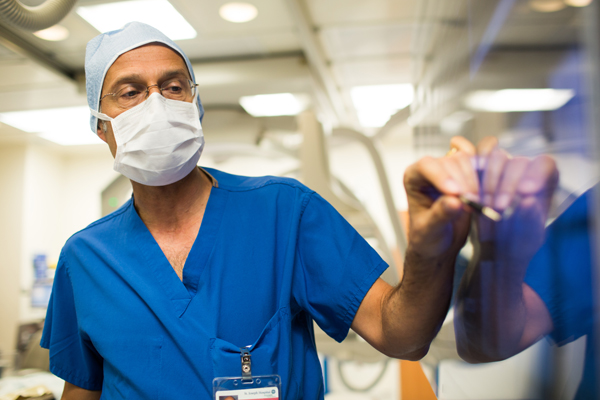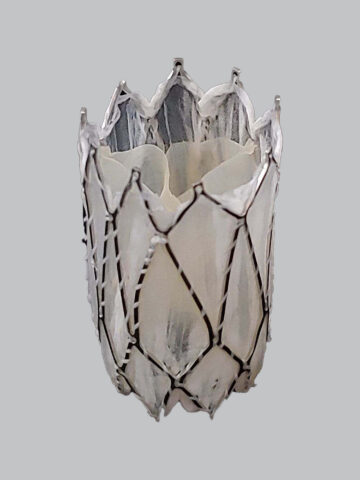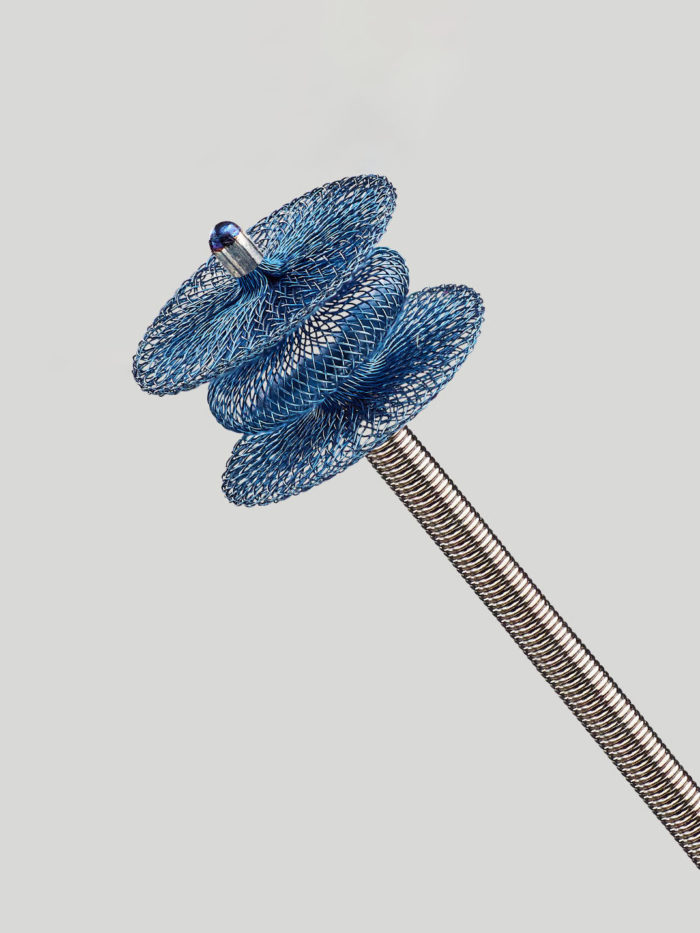Interventional Cardiology Program
Call today to schedule an appointment with one of our pediatric specialists.
Cardiology & Cardiothoracic Surgery Referrals
Physicians can refer patients to CHOC through our eCeptionist Referral Portal.
View the referral guidelines
The CHOC Heart Institute proudly offers an Interventional Cardiology Program for the diagnosis and treatment of cardiac conditions. Interventional cardiologists do not diagnose or treat patients using conventional surgery; they specialize in performing minimally invasive cardiac catheterization procedures in our state-of-the-art catheterization laboratories.

Cardiac catheterization is a specialized procedure in which a long, flexible tube (catheter) is inserted into a blood vessel (usually in the leg or arm) and guided into the heart, allowing a close look at the structures inside. Cardiac catheterization may be recommended to help diagnose a heart problem. It can also be therapeutic and provide treatment or intervention for a heart condition, such as a congenital (present at birth) heart problem.
What We Treat
Advances in interventional cardiac care have changed the ways in which we diagnose heart conditions in babies and children. Because of the better imaging now possible with echocardiography and magnetic resonance imaging (MRI), fewer cardiac catheterizations are done to diagnose a heart problem. Instead, catheterizations are often done to treat an already known heart disorder.
Congenital heart conditions that may be treated by one of our interventional cardiologists include:
- Atrial septal defect (ASD)
- Ventricular septal defect (VSD)
- Patent ductus arteriosus (PDA)
- Coarctation of the aorta
- Pulmonary artery stenosis
- Aortic stenosis (AS)
- Pulmonary atresia (PA) with multiple collaterals
- Narrowing or re-stenosis of shunts.
Cardiac catheterization procedures used to treat common heart conditions include, but are not limited to:
- Stenting of narrowed vessels
- Staged hybrid therapy of patients with hypoplastic left heart syndrome
- Expanding hybrid and intraoperative interventional procedures and new therapeutic strategies
- Transcatheter implantation of the pulmonary valve
- Closure of atrial and ventricular septal defects
- Closure of patent ductus arteriosus for infants weighing less than 5 kilograms
- Treatment of patients with complex pulmonary artery obstructions
- Balloon dilation of stenotic valves or narrowed vessels
- Coil embolization of undesirable vessels and patent ductus
- Treatment of patients with coarctation of the aorta and complex arch obstructions.
Understanding Cardiac Catheterization
How is a cardiac catheterization performed?
Cardiac catheterization procedures are performed in one of two state-of-the-art catheterization labs in the Tidwell Procedure Center at CHOC. The child’s doctor will discuss the risks and benefits of the procedure with the child’s family and require written permission (informed consent) from the child’s legal guardians to do the procedure.
Upon arriving at the procedure center, the child will be taken to a “pre-op” room where he or she is prepared for the procedure. This includes taking vital signs, having the child change into a hospital gown and starting any necessary IVs. The child is also given a sedative to help him or her relax before the procedure. Once in the “cath lab,” he or she will usually receive general anesthesia. The child will lie on a small table with a c-shaped X-ray machine surrounding it. Heart monitors and other equipment are nearby. A specially trained staff of nurses, technicians and doctors will monitor the child and make sure he or she is comfortable during the procedure.
An injection of local anesthetic is given under the skin where the catheter is going to be inserted. Next, a thin, flexible tube (catheter) is inserted into a blood vessel, most often in the groin area (the crease of the leg where it bends when sitting). The catheter is guided up the vessel (artery or vein depending on the purpose of the procedure) towards the heart. The cardiologist uses X-rays, called fluoroscopy, to help see the movement of the catheter. From the vein, the catheter enters the right atrium–the top right-hand chamber that receives oxygen-poor (blue) blood from the body. Eventually, the tube will be guided into the right ventricle, the pulmonary artery, and perhaps the right and/or left pulmonary artery branches. In addition, another catheter may be placed into the artery in the groin, which can be advanced to the aorta.
While inside the heart, several things may be done to help evaluate the heart structures, as well as the pattern of blood flow inside the heart, including the following:
- Blood samples may be drawn from each chamber and each blood vessel and the oxygen content measured.
- Blood pressure measurements may be made inside each chamber and each blood vessel.
- Contrast dye may be injected into the catheter and, as it flows inside the heart, X-rays may be used to show the path the dye takes throughout the heart.
- X-ray movies (angiograms) are made as the catheterization proceeds. This lets the child’s cardiologist review the data after the procedure. If surgery is planned, the heart surgeon will also review the data.
- In some cases, certain procedures may be performed in lieu of open-heart surgery or in conjunction with a heart surgeon. One such procedure is the insertion of a revolutionary Melody® Transcatheter Pulmonary Valve.
Learn more about what to expect at the Tidwell Procedure Center.
What is a Melody® Transcatheter Pulmonary Valve?
Among the variety of treatment options available through the Interventional Cardiology Program at CHOC is the Melody® Transcatheter Pulmonary Valve that offers children with failing pulmonary valve conduits a new option for their condition without open-heart surgery. CHOC is proud to be one of less than 100 centers in the United States to offer this FDA-approved alternative to open heart surgery. CHOC boasts a program that rates above average in the number of these procedures performed in the nation as well as some of the best patient outcomes. Learn more about the Melody valve at CHOC.
What happens after a cardiac catheterization procedure?
After the procedure, the child will need to lie still for four to six hours to decrease the risk of bleeding, and pressure must be applied to the site where the catheter was inserted. Special machines are used to monitor the child’s heart as he or she recovers. Most patients go home on the same day, but some will stay in the hospital for one night for observation.
In the days following the procedure, patients may experience mild symptoms like an achy chest and discomfort or bruising in the area where the catheter was inserted. Some children might also notice skipped heartbeats or irregular heart rhythms. Most children can return to their normal activities within a few days.
Caregivers should contact the child’s doctor immediately if they notice unusual pain or swelling, excessive bleeding or if the child complains of consistent irregularities in their heartbeat.
It is important to follow all of the doctor’s instructions, especially regarding follow-up visits, medication schedules and safe levels of physical activity.
Feature Stories
Heart / Cardiology
Milestone procedure saves preemie with complex heart disease
Before Hope was born, her mom knew she had heart defects and would need surgery after birth. Thankfully, she was in good hands at CHOC.
Heart / Cardiology
‘First of its kind’ pulmonary valve ‘grows’ with patients
Children who need pulmonary valve replacement benefit from surgery. The IRIS valve is built small enough to implant in very young patients.
Healthcare
CHOC team using new device to close heart defect in tiny patients
CHOC became one of the first hospitals to use the Abbott Amplatzer Piccolo™ Occluder to treat patent ductus arteriosus or PDA.


